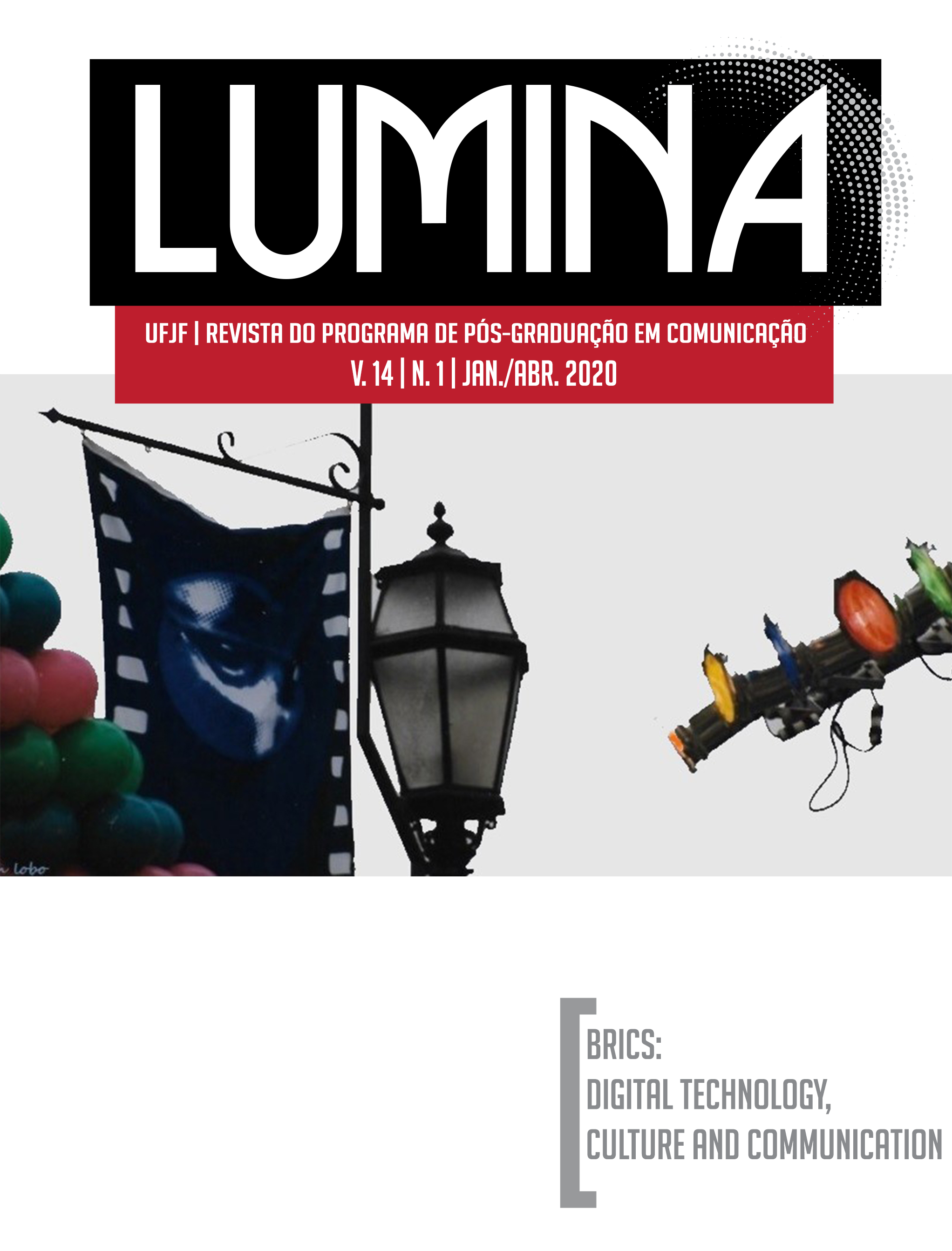The screenplay stylistics of contemporary television series: Analysis of the episode Chicanery, from Better Call Saul
DOI:
https://doi.org/10.34019/1981-4070.2020.v14.29005Keywords:
Better Call Saul, Chicanery, Series ScreenplayAbstract
This paper intends to analyze the script of the episode Chicanery, from the third season of the TV series Better Call Saul, a coproduction between AMC and Netflix. In theoretical terms, we seek to identify the aspects that boosted the screenwriting of contemporary television series, looking towards the sophistication of style and narrative, which led to the development of a writing design more interested in the atmosphere and the subjectivity, rather than the traditional objectivity on the description of the scene. To comprehend this stylistics, we observe, methodologically, how some elements, unusual to the orthodoxy of the screenplay, help in the textual structure of Chicanery. In the end, we show the functions of atmospheric and subjective elements in the contemporary audiovisual serialization.
Downloads
References
CHICANERY. BETTER CALL SAUL. Showrunner: Vince Gilligan e Peter Gould. Roteiro: Gordon Smith. Direção: Daniel Sackheim. Temporada 03, episódio 05. EUA, Netflix, 2017. 49 min. Digital FullHD. Color.
BUTLER, Jeremy. Television Style. Nova York: Routledge, 2010.
MACDONALD, Ian W. Screenwriting poetics and the screen ideia. Londres: Palgrave Macmillan, 2013.
MITTELL, Jason. Complexidade Narrativa na Televisão Americana Contemporânea. Matrizes, v. 5, n. 2, p. 29-52, 2012. Disponível em: <https://bit.ly/3avxGhT>. Acesso em: 30 mar. 2020
GONÇALO, Pablo. O cinema como refúgio da escrita: Ekphrasis e roteiro, Peter Handke e Wim Wenders, arquivos e paisagens. Rio de Janeiro: [s.n], 2015, 379 p. Disponível em: <https://goo.gl/83mNYD> Acesso em: 5 ago. 2019.
GUMBRECHT, Hans Ulrich. Atmosfera, ambiência, Stimmung. Sobre um potencial oculto da literatura. Rio de Janeiro: Editora PUC-Rio, 2014.
JACOBS, Jason; PEACOCK, Steven. Television Aesthetics and Style. Nova York: Bloomsbury, 2013.
PICADO, Benjamin; JACOB, Maria Carmem. Dimensões da autoria e do estilo na ficção seriada televisiva. Matrizes, v. 12, n. 2, p.53-77,2018. Disponível em: <https://bit.ly/2UM6vci>. Acesso em: 30 mar. 2020.
ROCHA, Simone Maria. O estilo televisivo e sua pertinência para a TV como prática cultural. Famecos, v. 21, n. 3, p. 1082-1099, 2014. Disponível em: < https://bit.ly/2UtlLeX>. Acesso em: 20 mar. 2020.
SILVA, Marcel Vieira Barreto. Cultura das séries: forma, contexto e consumo de ficção seriada na contemporaneidade. Galáxia , v. 14, n. 27, p. 241-252,2014. Disponível em: < https://goo.gl/thzQEQ >. Acessos em: 5 ago. 2019.
SILVA, Marcel Vieira Barreto. O roteiro seriado: a estilística intermidiática no piloto de Mad Men. Televisão: entre a Metodologia Analítica e o Contexto Cultural. São Paulo: Editora a lápis, 2016.
SMITH, Gordon. Chicanery. Roteiro literário. Tratamento de Produção – Final. 21 de novembro de 2016. Disponível em: http://www.mzp-tv.co.uk/tv_scripts/Better_Call_Saul/Better_Call_Saul_3x05_Chicanery.pdf. Acesso em: 30 mar. 2020.
VILLEZ, Barbara. Television and the Legal System. Nova York: Routlegde, 2010.
Downloads
Published
How to Cite
Issue
Section
License
Autores que publicam nesta revista concordam com os seguintes termos:
- Autores mantém os direitos autorais e concedem à revista o direito de primeira publicação, com o trabalho simultaneamente licenciado sob a Licença Creative Commons Attribution que permite o compartilhamento do trabalho com reconhecimento da autoria e publicação inicial nesta revista.
- Autores têm autorização para assumir contratos adicionais separadamente, para distribuição não-exclusiva da versão do trabalho publicada nesta revista (ex.: publicar em repositório institucional ou como capítulo de livro), com reconhecimento de autoria e publicação inicial nesta revista.
- Autores têm permissão e são estimulados a publicar e distribuir seu trabalho online (ex.: em repositórios institucionais ou na sua página pessoal) a qualquer ponto antes ou durante o processo editorial, já que isso pode gerar alterações produtivas, bem como aumentar o impacto e a citação do trabalho publicado (Veja O Efeito do Acesso Livre).








